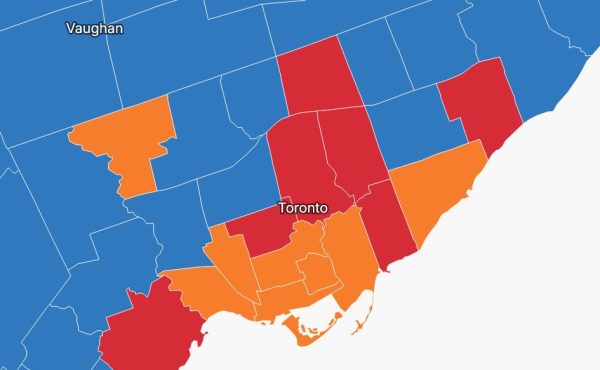The Big Apple has jumped into the bike share game, and, true to form, has immediately catapulted itself to the top of the list in terms of the size of the program. With 10,000 bikes spread out over 600 stations across Manhattan and Brooklyn in 2012, the program dwarfs other North American cities. (Toronto currently has 1,000 bikes while Montreal has just over 5,000). But even New York City’s huge roll-out won’t be enough to surpass Paris’ 20,000 bikes and Hangzhou’s over 60,000 bikes.
The program is privately-funded and operated by Alta Bike Share, Inc. with bikes and stations supplied by Public Bike Share Company—otherwise known as Montreal’s Bixi. The system looks to be similar to Toronto’s bike share, however trip limits of 45 minutes are being considered as compared to Toronto’s 30 minute limit. A yearly pass will cost less than $100, with the option for daily or even weekly passes.
However, what’s most interesting about the announcement is that, over the next few months, the City will be crowdsourcing potential locations for the bike share stations, turning to the internet to figure out exactly where people need bikes. You can check out the New York City Department of Transportation’s website for an interactive map that allows you to drag stations to locations on the map, write why you want a station there, and see where others have suggested stations. This kind of interactive and engaging task will not only hopefully design a better system that suits the needs of the people who will want to use it, but works to create a feeling of ownership amongst New Yorkers as they get to help build the system. Not to mention, it’s great publicity.
I was just in New York recently and marveled at the many new bike lanes, some painted a bright green or separated fully from traffic. The city has come a long way in the past few years, due mostly to transportation commissioner Janette Sadik-Khan’s tireless efforts to transform how New Yorkers get around. The addition of thousands of bikes in this new program will no doubt change the game for cycling in New York, flooding the streets with tourists and locals alike.
photo from NYCityBikeShare





6 comments
It’s great to hear that NYC has a bike share program now. It will be a great way to see Central Park, travel accross the Brooklyn Bridge, and explore many parts of the city. I wonder if the bike stations will take over some parking spots or if they will be located mostly on already crowded sidewalks. Luckily NYC has much wider sidewalks than Toronto and will likely be able to strategically locate the stations to impact pedestrian traffic as little as possible.
When does Toronto expand its program, at least double or triple the number of bikes and the coverage area? As it stands now it is really not that useful as it covers too small an area. Btw it costs the same or even more as ny’s version. Why do Toronto always gets this kind of timid half-baked things?
Yu — I think you’re over-reacting. You always start with a small-ish size area to work out the kinks and see where things can improve.
Toronto is set to expand Bixi each year. It will get wider and more northernly. But it takes time and investment.
But I’d rather see the City put more money into bike lanes and safer routes than anymore into Bixi (other than getting to as far west as Ossington and as far east as Broadview).
Morris, “you always start with a small-ish size area …”, true, but sometimes when you start too small it won’t take off, and IMHO BIXI in TO is too small. I know NY is not TO, but it is not 10 times larger than TO either. I kind of feel that they get the scale right there. BTW, “getting to as far west as Ossington and as far east as Broadview”, well, we are pretty much asking for the same thing – double or triple the current scale.
Yu is right, and so is Morris. Yes, Toronto is timid. The original plan was for 3000 and it got pared down to 1000 because the City was timid. 3000 would also have been just a portion of the eventual system which could be up to 5000 in the near future.
Part of the issue was funding. Bixi Toronto relies on a loan guarantee. From my understanding NYC is requiring the system be completely self-sustaining, which might mean it doesn’t even have a loan guarantee.
They’re all over the place in major European countries. The system works perfectly in France or Scandinavian countries so why not in America?